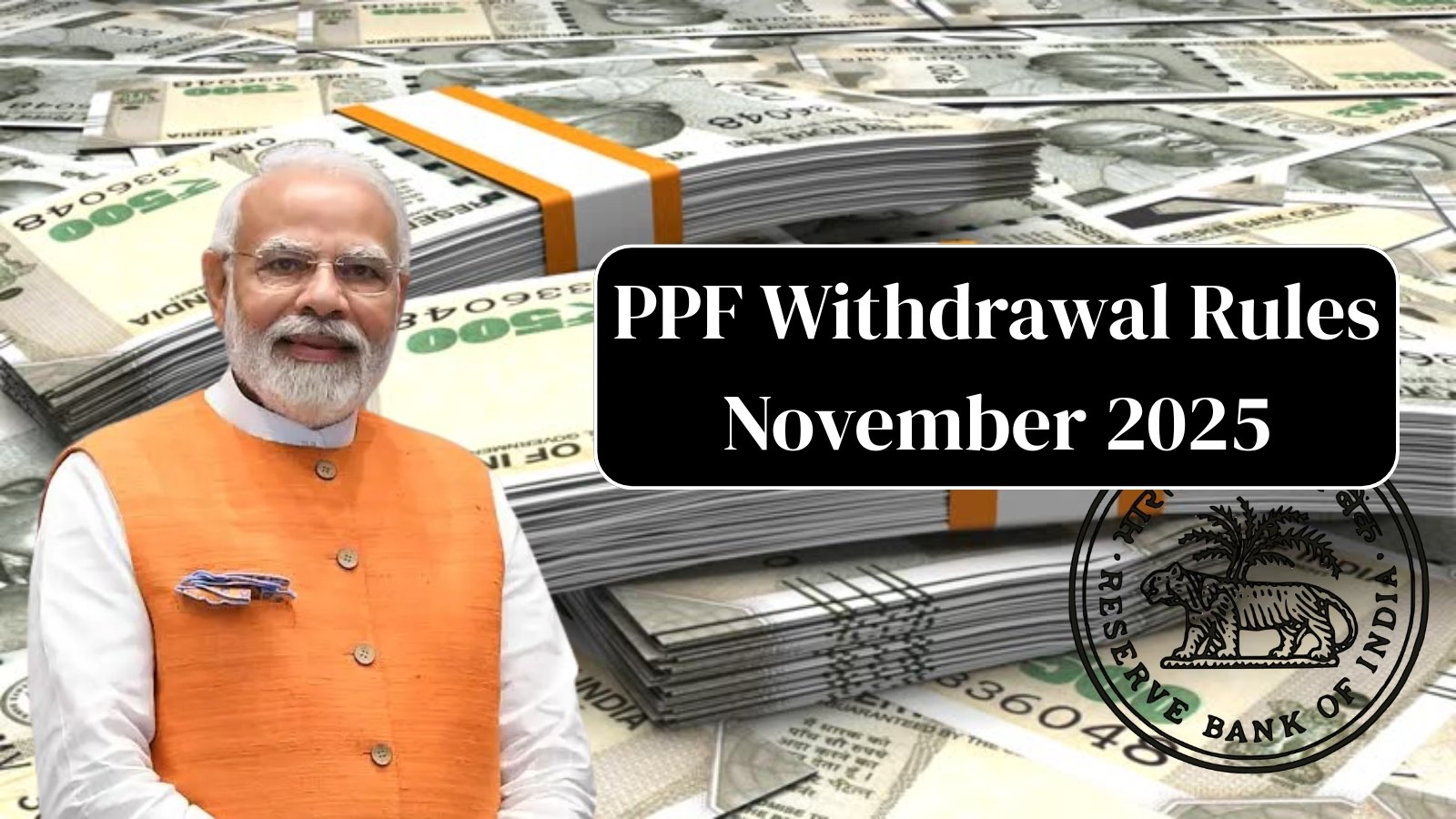PPF Withdrawal Rules November 2025: The Indian government has implemented groundbreaking changes to the Public Provident Fund (PPF) rules in 2025, significantly easing the process to withdraw funds and ensuring that the maturity amount and interest remain completely tax-free. These reforms are expected to benefit millions of account holders by offering greater flexibility, early access to savings, and enhanced liquidity during emergencies.
What is PPF and Why Is It Important?
** पीपीएफ** (Public Provident Fund) is a government-backed savings scheme designed to promote long-term savings among Indian citizens. It offers attractive interest rates, tax benefits under Section 80C, and a fully tax-exempt maturity amount, making it one of the most trusted retirement vehicles. Its 15-year lock-in period ensures disciplined savings, perfect for retirement planning, education funding, or down payments on homes.
Major Changes Announced in 2025
Relaxation in Partial Withdrawal Rules
Previously, partial withdrawals from PPF were only allowed after the fifth year, with a limit of 50% of the balance, and only for specific circumstances. Now, under the new rules:
Partial withdrawals are allowed from the third year, under certain conditions such as medical emergencies, education, or housing needs.
The withdrawal limit has been increased to 60% of the balance, up from the previous 50%, offering greater liquidity.
Documentation requirements have been simplified; no prior permission is required for withdrawals related to medical, educational, or housing purposes.
Ease of Online and Digital Withdrawals
The government has introduced digital withdrawal facilities, enabling account holders to transfer funds online directly to their bank accounts, making the process more convenient and faster.
Increased Flexibility and Emergency Access
Premature withdrawals for emergencies, like health crises or education fees, are now more accessible.
The withdrawal limit and frequency have been expanded, allowing multiple partial withdrawals during the scheme’s tenure, especially after the third year.
Full Maturity and Extensions
After 15 years, the entire corpus (including principal and interest) can be withdrawn tax-free.
The account can be extended in blocks of 5 years, with or without additional contributions, allowing continued earning of interest while keeping funds accessible.
Key Highlights of the New Rules
| Withdrawal Type | When Allowed | Limit/Criteria | Notes |
|---|---|---|---|
| Partial Withdrawal | After 3rd year | Up to 60% of balance | For medical, education, housing |
| Full Withdrawal | After 15 years | Full corpus | Optional extension in 5-year blocks |
| Premature Closure | Before 15 years | On valid reasons | Documentation needed |
Interest Rate and Tax Benefits
The interest rate on PPF remains attractive at 7.1% per annum as of October 2025. Importantly:
Interest, maturity amount, and withdrawals are completely tax-free.
The scheme continues to offer tax benefits under Section 80C, making it a vital part of retirement planning and long-term savings.
The Rationale Behind the Reforms
The government’s primary goal with these updates is to provide easy and quick access to savings when urgently needed. Previously, many investors felt constrained by rigid rules and limited withdrawal options, which hampered their financial flexibility during emergencies. The new rules address these issues, enabling citizens to use their savings effectively without compromising their long-term security.
The PPF withdrawal rules November 2025 mark a significant step in making long-term savings more flexible and accessible. With simplified procedures, increased withdrawal limits, and digital enhancements, millions of Indian investors can now rely on their PPF accounts for timely financial support during critical moments. These reforms are expected to encourage more citizens to invest in PPF, knowing their funds are easily accessible yet fully tax-exempt.
